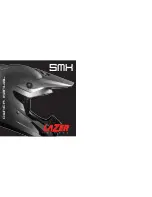
RIDING
Review Motorcycle Safety before you ride.
Make sure the side stand is fully retracted before
riding the motorcycle. If the stand is extended,
it may interfere with control during a left turn.
Make sure you understand the function of the
side stand mechanism.
1. After the engine has been warmed up, the
motorcycle is ready for riding.
2. While the engine is idling, pull in the clutch
lever and depress the gearshift pedal to shift into
lst (low) gear.
3. Slowly release the clutch lever and at the same
time gradually increase engine speed by opening
the throttle. Coordination of the throttle and
clutch lever will assure a smooth positive start.
4. When the motorcycle attains a moderate speed,
close the throttle, pull in the clutch lever and shift
to 2nd gear by raising the gearshift pedal.
This sequence is repeated to progressively shift
to 3rd, 4th (top) gears.
33
5. Raise the pedal to shift to a higher gear and
depress the pedal to shift to a lower gear. Each
stroke of the pedal engages the next gear in
sequence. The pedal automatically returns to the
horizontal position when released.
Do not downshift when traveling at a speed
that would force the engine to over rev in the
next lower gear; the rear wheel may lose traction,
resulting in a possible loss of vehicle control.
Do not shift gears without disengaging the
clutch and closing the throttle. The engine and
drive train could be damaged by over speed and
shock.
Do not tow the motorcycle or coast for long
distances while the engine is off. The
transmission will not be properly lubricated and
damage may result.
Do not run the engine at high rpm with the
transmission in neutral or the clutch lever pulled
in. Serious engine damage may result.
34
















































